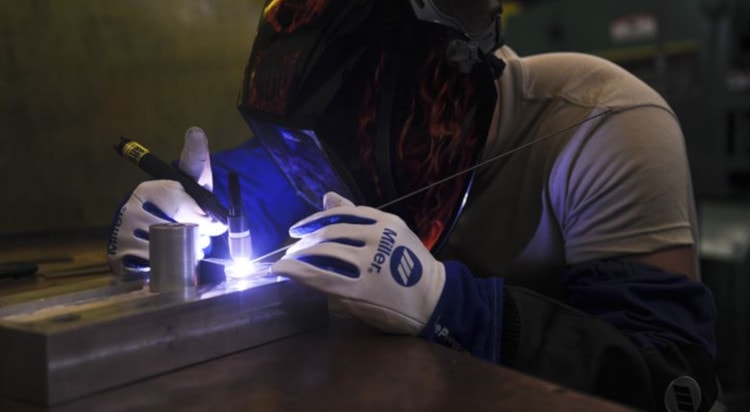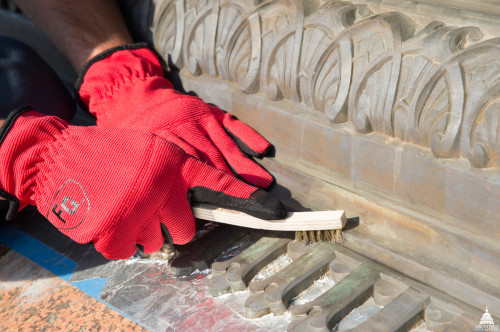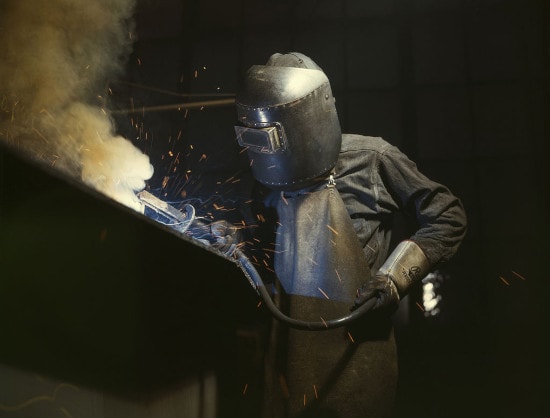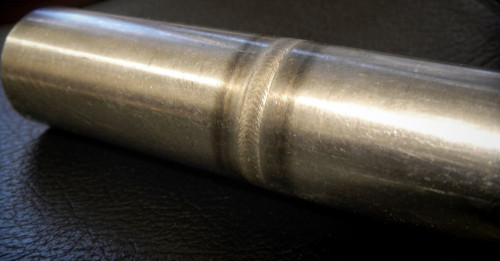8 Improvements to Your Stainless Steel TIG Welding
Last Updated on

When you’re starting out, it can feel like a horrific nightmare trying to TIG weld stainless steel. Have you ever set your welder up exactly the same as your pro workmate and yet still produced ugly welds? It’s always a demoralizing feeling.
However, with a few tips, you can turn all that around. From the right rods to a clean workpiece, gas tips, speed, and a few other essential tips, your next TIG job can turn out a masterpiece. Dive in and learn the eight tips you can embrace to improve your next TIG welding project.
1. Use the Right Tungsten Rod
There are various types of tungsten rods to choose from. What they contain, whether it’s pure tungsten or a tungsten rod with some additives, won’t make much difference to your weld quality. Some will start arcing easier than others, and some will last longer than others, but what you need to be concerned about to ensure weld quality is the diameter of your tungsten rod.
If you’re welding light sheet metal at low amps with a larger diameter tungsten rod, your weld will struggle to start, and when it does, the weld will not be smooth and consistent. The heavier the stainless steel you’re welding, the bigger the diameter of your rod should be. Here is a chart to show the correct tungsten rod diameter for your plate gauge, along with the amperage range to match.
| Material thickness | Tungsten diameter | Amp range |
| 1/16 | 1/16 | 80-20 |
| 3/32 | 1/16 | 100-30 |
| 1/8 | 3/32 | 120-150 |
| 3/16 | 3/32 | 150-250 |
| 1/4 | 1/8 | 200-350 |
| 1/2 | 1/8 | 235-375 |
2. Clean Your Metal
All welding joints need to be clean before welding, but particularly in stainless steel TIG welding. There is a “no shortcuts” mentality that every stainless steel welder needs to embrace, and it’s especially applicable here. It will bubble your weld, which adds a weakness to it while hindering the fluid motion your pass needs to make for a clean bead.
How dirty the material is will determine how you should clean it. A clean rag will sometimes work, but acetone or other thinners are useful options to clean stainless steel, as they remove everything efficiently and evaporate just as fast.

3. Use a Clean Sharp Tip
While a tungsten tip without dirt on it will definitely help, this is usually not the case. More often than not, tips are clean before you weld. What often happens during the TIG process is that your filler rod touches the hot tip and melts a blob onto it, creating what’s called a dirty tip.
When the tip becomes dirty like this, your arc gets distorted, and you lose a vast amount of control over your aim. The arc shape and precision are determined by how your tip is ground. The finer the point and the smoother the finish, the cleaner and more accurate your arc will be. This dirty spot of metal on it turns a small and stable arc into an off-axis shape that is wobbly.
4. Increase Gas Coverage
Any air that gets into welds will produce impurities in the bead and can change the color of your stainless steel. The more gas you use, within economic reason, the tidier your weld will be. This is not just more gas flow. A wider cup to produce a broader coverage of gas will make a significant difference to your welds.
A number 12 cup at a minimum is best to use when the space you’re welding allows it. Sometimes the area is too narrow, and therefore you just make do with what you have in the circumstance.
5. Increase Your Speed to Minimize the Heat
The more heat you put into stainless steel TIG welding, the worse your weld will look, and the more your project will warp. However, this does not mean that you should turn down your amperage. This will require traveling much slower and therefore produce more heat input on an overall scale.
The key is to weld with enough amperage that your welds do not blow through, nor cause undercut while traveling as fast as you can without losing your welding accuracy. This will be different from person to person because of individual capability. A general guide is to run your welder at 10% less than one amp per 0.001 inch of stainless steel and travel fast enough to match the heat.
6. Choose the Right Filler Wire
There are various types of filler wire to use, and their size and material will affect your weld’s quality significantly. First, make sure that they match the kind of stainless steel you’re welding. Don’t weld 304 stainless steel plate with 316 rods. The type of material must be equal or greater in strength and quality, or else your weld will be weaker than the parent metal. Welds must always match or exceed the parent metal’s strength, as they are always the natural weak point.
It also pays to weld with the right-sized rods. Using a heavy gauged filler wire on a light section with low amperage will result in ugly blobs, rather than a consistent fluid weld. Using thin gauged filler wire with high amperage will melt the wire effectively, but it will be hard to keep up with the right amount of filler wire. It will either create a skimpy weld that lacks weld volume, or an inaccurate weld from the excessive speed you’re trying to feed the wire at.
Find the right size by trial and error on a practice section before beginning your weld to ensure the filler rod diameter is the correct size for you.
7. Back Purge Your Job
Back purging a weld is the process of keeping the backside of your weld in an environment shielded from air. You can achieve this through a purging kit or by covering the backside of your joint with aluminum wrap and a shielding gas line feeding into it.
The oxidation that occurs from the underside of your joint being exposed to air not only causes an ugly look behind your weld, but affects the way your weld runs. Back purging your weld will ensure your bead is formed more smoothly, and it keeps the color and deformation out of both sides of your joint.

8. Let Your Project Cool
Stainless steel grows and warps excessively from heat. It also forms the red, blue, and black coloring you’re familiar with on welds. The coloring is all from excess heat. Welding will always need heat, otherwise, the metals won’t weld together, but the heat on stainless steel is from the job heating up more than it needs to.
Did you know that it’s possible to weld a joint beautifully with good penetration without any color? This is how every weld should be. A little bit of color may come, but if your welds are excessively red and blue, or even worse, black, then it’s there because too much heat is being put into your job. As we mentioned earlier, excessive workpiece heat comes from your arc sitting on the same spot for too long, not your amperage.
To help with the problem of heat build-up, it’s good practice to give your weld a break from a continuous run. Start welding a section, and when you notice it’s getting hot or beginning to color, stop to let it cool a little before carrying on. This will not only keep the discoloration away, but will help prevent any heat deformity from ruining your project.

Final Thoughts: Improvements To Your Stainless Steel TIG Welder
Stainless steel TIG welding is really nice to do when you follow all the right measures. The main reason people have so much trouble with it is that they take shortcuts. You cannot take shortcuts with stainless steel. It will always rebound back at you with ugly welds and often a ruined project.
Follow the right steps, and the quality of your next TIG welding job will improve dramatically.
Here are some of our other tutorials:
- How to Become a Certified Welder
- Warming Up to Welding: The Whys and Hows of Preheating
- How to Start a Lucrative Welding Business & Succeed
- Can You Weld Stainless Steel with Flux Core? All the Facts!
